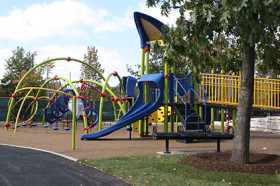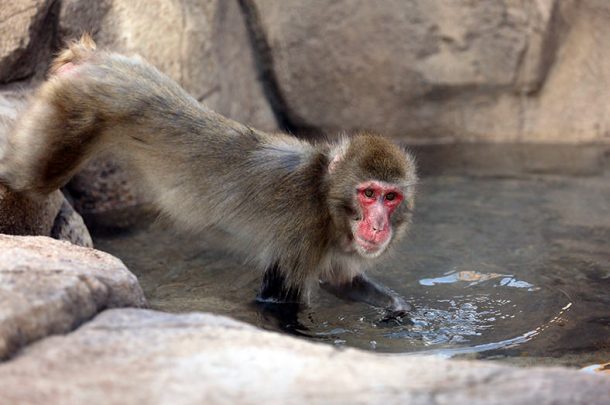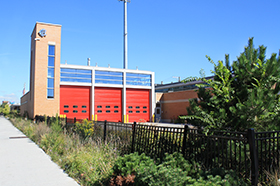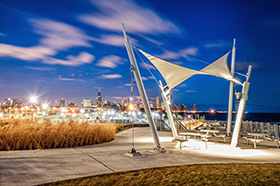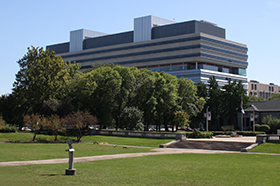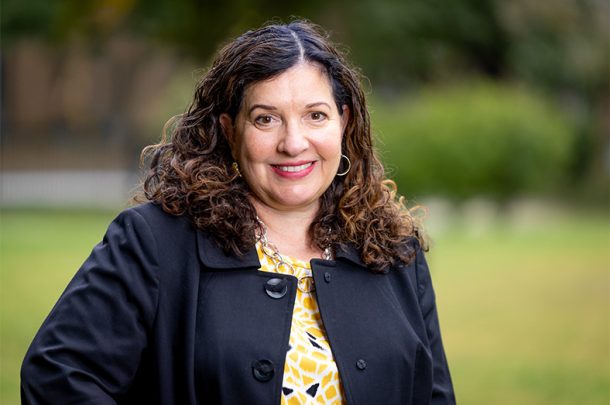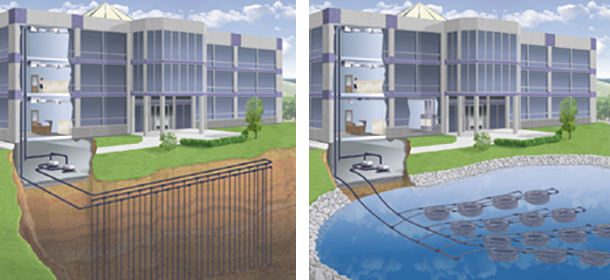
With energy efficiency becoming a greater concern for building owners, geothermal technology is gaining popularity. By using the earth’s energy storage capability to provide heating and cooling, geothermal offers more efficiency than electrical energy. Consider this: one 450-foot deep borehole can provide approximately 2.5 tons of cooling for a building. Geothermal technology is impressive, but it’s not the appropriate solution for every project. If you’re curious about geothermal, here are nine questions – and answers – that will jump-start your research.
Q1: I’VE HEARD A LOT ABOUT GEOTHERMAL, BUT WHAT ARE THE REAL BENEFITS?
Simply put, geothermal is more energy efficient and buildings that utilize geothermal technology use less energy from the grid. It is also low maintenance and it’s safe for the environment. If you’re looking for numbers, geothermal technology can beat ASHRAE 90.1-2007 by up to 40 percent from a traditional system when considering the life of the building. Finally, an entire geothermal field usually enjoys an approximate 100-year life expectancy.
Q2: HOW BIG AND DEEP DOES A GEOTHERMAL WELL NEED TO BE IN ORDER TO REALIZE THESE BENEFITS?
Geothermal can be executed in both rural and urban environments, so there’s no need to think that your project must sit on acres upon acres of land. Horizontal fields are typically used in wide open spaces. They are also less expensive and easier to install than vertical installations.
Vertical fields are ideal in urban environments because they utilize a smaller footprint when space is at a premium. A common well field consists of several vertical bores that are about 6 inches in diameter spaced 20 feet on center. Spacing between bores maintains a stable ground temperature throughout the life of the field.
The actual depth of the wells usually varies from 300 to 600 feet deep, depending on the contractor and site conditions. The depth of the field, grout type and soil conditions will affect the amount of energy delivered to the building. For every 130 to 200 feet of borehole drilled, a building will gain one ton of cooling.
Q3: YOU MENTION HORIZONTAL AND VERTICAL GEOTHERMAL SYSTEMS. ARE THERE OTHER SYSTEMS OR DEVELOPING TECHNOLOGIES THAT I SHOULD KNOW ABOUT?
Yes. Water to Water Systems can provide owners with geothermal solutions that replicate boiler and chiller plants. Water to Air Systems can provide owners with less complex systems that still use the advantages of geothermal technology. Hybrid Systems combine a traditional boiler/chiller system with geothermal and can alleviate space or budget constraints. Lake or Pond Loop Systems involve coils of pipe, or a submersed heat exchanger placed in a body of water. This type of system can be very economical when a large body of water is available. Primera is currently designing the largest Lake Loop System in Lake Michigan to heat buildings at Chicago’s new 31st Street Harbor.
Q4: DO BUILDING CODES ADDRESS GEOTHERMAL?
There is no code that specifically addresses geothermal, so be sure to meet with code officials in your jurisdiction in the beginning stages of your project. Some jurisdictions have interpreted the Illinois Department of Public Health (IDPH) Water Well Code to apply to geothermal wells. This code states that sewers may be located within 10 feet of the well if the sewer construction meets certain requirements, if not the distances increase. However, the code technically refers to the location of water wells with respect to sewer lines and is not specifically applicable to geothermal.
Q5: BEFORE DRILLING, HOW CAN I DETERMINE SITE CONDITIONS?
Generally, before a geothermal field is designed, a test bore is drilled to determine the conductivity value of the soil in the area of the proposed field. A preliminary analysis of the field can be completed before the test well is drilled in order to determine the depth of the test well. In order for the test bore to provide the most accurate information, it should be drilled to the same depth as the proposed field. Drilling the test bore at the same depth may take more effort, but the test bore can be used as a borehole, saving time in the future.
Q6: WHAT OTHER FACTORS SHOULD I CONSIDER WHEN PLANNING CONSTRUCTION?
Coordination with other trades is very important to consider when planning the construction schedule. Depending on the location of the field and the building it’s serving, special care must be taken to protect the field from construction equipment.
Q7: HOW MUCH DOES GEOTHERMAL COST AND WHAT’S A TYPICAL ROI?
Geothermal’s upfront costs are typically 25 percent higher than traditional systems and owners should see a payback after 5 to 8 years. Continued energy savings are up to 40 percent over an ASHRAE 90.1 baseline throughout a building’s lifecycle. Short-term owners may not realize a full return on investment, so each project should be analyzed on a case-by-case basis. If you are a long-term owner, consider your energy savings goals and your current and future utility rates. Remember, although geothermal is expensive, federal grants and tax credits are available to help offset the initial investment.
Q8: WHAT GOVERNMENT INCENTIVES CAN HELP LOWER THE COST OF MY PROJECT, SHOULD I CHOOSE GEOTHERMAL?
Several grants and tax incentives are available for geothermal technologies, both at the state and federal levels. For example, The Energy Policy Act of 2005 included a new tax incentive to improve the energy efficiency of commercial buildings. The Commercial Building Tax Deduction establishes a tax deduction for expenses incurred for energy efficient building expenditures made by a building owner. The deduction is limited to $1.80 per square foot of the property, with allowances for partial deductions for improvements in interior lighting, HVAC and hot water systems, and building envelope systems. The Emergency Economic Stabilization Act of 2008 (HR-1424) extends the benefits of the Energy Policy Act of 2005 through December 31, 2013.
Q9: WHERE CAN I LEARN MORE?
The Geothermal Alliance of Illinois and GeoExchange both provide timely information on geothermal technology. Visit www.geothermalallianceofillinois.org or www.geoexchange.org to learn more. Primera has designed and/or commissioned a number of geothermal systems and can also help you through the process.






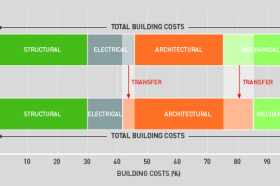
 A Look at Net Zero Energy Buildings
A Look at Net Zero Energy Buildings 
